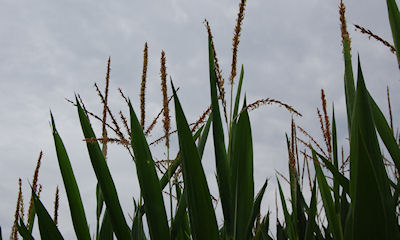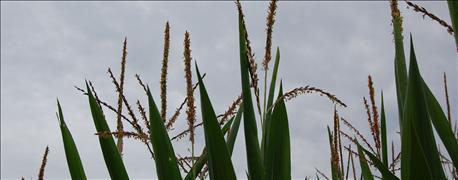
Just a few months ago, analysts expected farmers would plant an equal number of soybean and corn acres in 2015. According to USDA's 2015 Prospective Planting report, things have changed.
Released March 31, the report indicated farmers intend to plant 89.2 million acres of corn, which is 1.4 million acres less than 2014. The big surprise was the reported 84.6 million acres of soybeans growers plan to plant in 2015. University of Illinois ag economist Gary Schnitkey says this number is nearly 1.3 million acres less than the average trade guess.

Editor's note: Portions of this article originally appeared on farmdocDAILY. For the full version, visit www.farmdocdaily.illinois.edu.
Farm Futures' senior market analyst Bryce Knorr says farmers will still plant a lot of soybeans in 2015, just not as many as analysts originally anticipated. He offers several explanations.
"First, soybean profitability is moving further into the red," Knorr notes. "Second, farmers may be waiting to make up their minds about what to plant."
Lastly, Knorr reminds growers that the USDA's March survey is simply one data point in time.
"There is often a difference between the March planting intentions and what farmers plant that can't be explained by weather or prices," Knorr notes. "That' doesn't mean it's a bad survey. But, it's just an estimate."
Further complicating matters is the fact that analysts are still uncertain about how many acres farmers planted in 2014, Knorr adds.
"Certifications for the farm program suggested they planted and harvested fewer corn and soybean acres that NASS found," he says. "The FSA data isn't a survey – it's the entire population, at least of farmers who participate in the government program."
~~~PAGE_BREAK_HERE~~~
Sending signals to input suppliers
In the meantime, Schnitkey says the increase in corn acres is good news for input suppliers. In an April 7 post on farmdocDAILY, he noted the projected costs associated with producing a corn crop in 2015.
In central Illinois on high-productivity farmland, 2015 fertilizer costs are projected at $148 per acre for corn-after-soybeans compared to $49 per acre for soybeans. Seed costs are projected at $124 per acre for corn compared to $78 per acre for soybeans. Pesticide costs are $66 per acre for corn compared to $40 per acre for soybeans.
"Having more corn acres increases the chances of higher gross revenues for input manufacturers," Schnitkey says. "Higher revenues then can lead to higher returns if margins are roughly the same between corn and soybean inputs. Therefore, the projected relatively small shifts away from corn reduce the possibilities of input manufacturers facing much lower incomes from 2015 sales."
On the other hand, farmers are looking at reduced incomes in 2015, especially if corn and soybean prices remain stagnant, Schnitkey adds.
"If corn prices continue to be below $4.40 into the fall, there will be mounting pressures for farmers to reduce 2016 cash flows through reduced cash rents and reduced fertilizer, seed, and pesticide expenditures," he says.
Unfortunately, input manufacturers may not see the need to reduce input prices, as corn acres did not decrease significantly in 2015 while input prices were high, Schnitkey notes. Therefore, not having a significant corn acreage reduction in 2015 may mean less downward pressure on input prices for 2016 production.
About the Author(s)
You May Also Like




